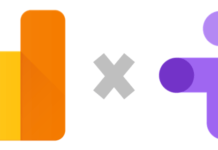In October, Google announced the release of Google Analytics’ new generation: Google Analytics 4. Previously known as “App+Web Property” in its beta version. With this new generation, Google Analytics focused more into the customer journey, so that businesses understand better needs and behavior of their customers.
Why Google Analytics 4?
You might have been confused by why the new generation of Google Analytics was called Google Analytics 4 (GA4). GA4 is the result of the 15 years of Google Analytics’ development, different way of implementation and major changes.
- 1st generation: Urchin tag (when Google buy Urchin company, urchin.js)
- 2nd generation: Traditional Google Analytics, the base of the current GA (ga.js)
- 3rd generation: Universal Analytics, start of cross domain tracking (analytics.js and gtag.js)
- 4th generation: New Google Analytics 4, with improve analysis and new property default model (gtag.js)
What is Google Analytics 4?
Google new generation analytics is based on the property introduced in beta version last year called App+Web property. With the GA4, the app+web property becomes the default property setting.
The App+Web property is a property enabling the measurement of website, app or both. In last years, mobile users have increased, and the data generated by mobile users cannot be overlooked anymore, while keeping in mind that users might have different devices (PC, tablet…). In Universal Analytics, making data collected from website and app working together was difficult. When the web activity was measured on session-based, app data (Firebase) was measured using an event-based model. With App+Web property and now GA4, both data are unified on event-based model enabling a better and more accurate analysis.
What the differences between Universal Analytics and Google Analytics 4?
1/ Event-based model
From a session-based measurement with UA, GA4 is switching to an event model.
What does it mean? In UA, data was collected into session. During a session (given time frame), Analytics stored user interactions as hits (pageviews, events, eCommerce, social interactions). In GA4, every interaction on the website or app are events. From events, you get to know what is happening in your platforms (pageviews, user actions, clicks, conversion, system events).
To be sure that every tiny or big interactions are collected, GA4 has 3 different types of events:


- Automatically collected events (pageviews, clicks, inApp_purchase)
- Enhanced measurement for Web data stream
- Automatic
- Recommended events:
- for all website/app : login, purchase
- specific for your activity (game : level_up, level_start)
- Customized events (to use when you cannot find any automatic or recommended events that match your needs).
With events, Analytics collects bit of information to specify the event called parameters (3 types as well: automatic, recommended, or customized). Website and app having the same measurement enable you to better understand how users engage with your business across devices and platforms, giving you richer insights.
2/ Full cross-device and cross platform
Being able to identify your users during their interactions with your platform, is very important to understand them better and to develop more accurate marketing ways to target them.
Reports in UA were mainly focused on device-ID (browser cookie), which gave an incomplete view of the user, for example you could not know if the same user was using different platforms. Even if other identification means (User-ID and Google signal) were enabled, the data was collected and viewed in different reports, limiting cross device and platform analysis.
In GA4 and by default, the data is processed by using all available identity information possible. First, by using the User-ID, the ID given by your business from authentication/sign-in method; by Google signal, when the user is signed in its google account and allows its data to be shared; then the device-ID. Despite the default use of all available identification, you can choose to focus on device ID only and ignore any other identification.
In GA4, user identification is key to be able to know how your customer engage with your brand across platforms or devices, and the information is integrated to all reports. You can even create audiences around identified users to better target and personalized their customer’s experiences.


What are the merits of GA4?
1/ Better Analysis tools
a/ Reports
Even if the report panel in GA4 looks mostly like UA, you can get news reports and insights from it. In GA4, reports are newly organized to better focus on the key element of your business: the user and its behavior.
After the Home and Realtime reports, giving you major information about what’s going on your website in general or in Realtime (in the last 5 seconds to 30 minutes), you will have access to the newly organized report category called “lifecycle”. The lifecycle reports enable you to focus on your users during the different stage of its interaction with your website or app: introduction, engagement, conversion, and retention.
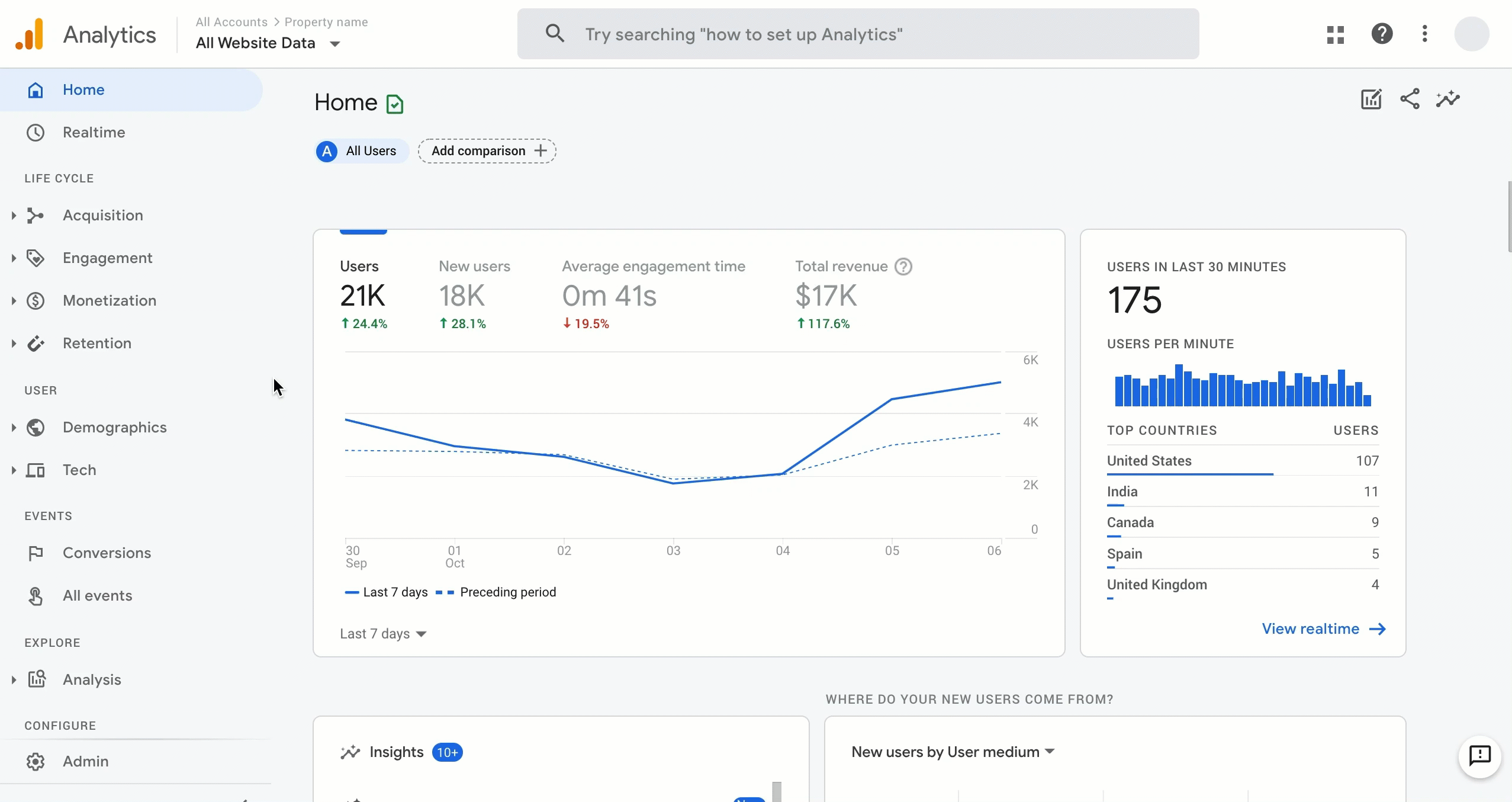

User reports will get all the information you need to know better the user itself: its characteristics (age, country, interests) and the technology they are using to access your platforms.
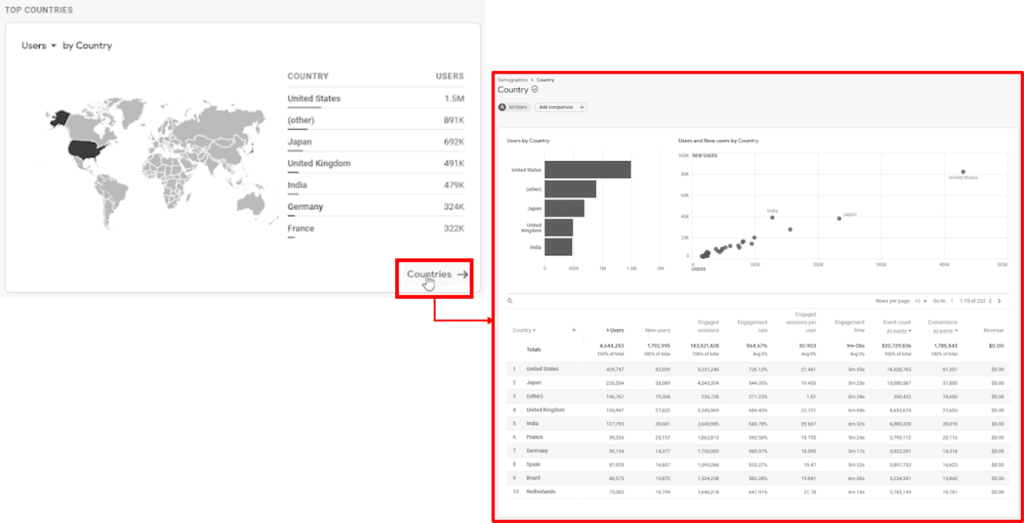

Event reports will focus on every interaction that is happening on your platforms and you will be able to quickly choose your most important interactions/events by making them conversions in a click.


b/ Analysis tools
The newest category on the panel is the analysis tool! In Analysis, you have all bunches of reports to give you better insights about your business and about what you can improve in your marketing and website so your user can have a better experience while on your platforms.
The first tool is Analysis Hub, where you can create, from scratch or using template, your own report to study what you really need. In a dashboard that looks a bit like Data Studio, you can easily select the dimensions and metrics you want and organize them into various and easy to read graphs. You can add, create your own segment, or compare data between different ones just by clicking and selecting the data you want to use. You can then decide to share or download your masterpiece.
To analysis your data, you can also choose one of the defined techniques:
- Exploration > dynamic table layout to enable you to select the metrics you need
- Funnel analysis or Path analysis > insights about how users are moving around your platforms
- Segment overlap > how your segments relate to each other and enable you to target very specific audience
- User explorer > help you personalize the user experience by studying a specific group of users
- Cohort analysis > analyze the behavior of a group over time on your platform
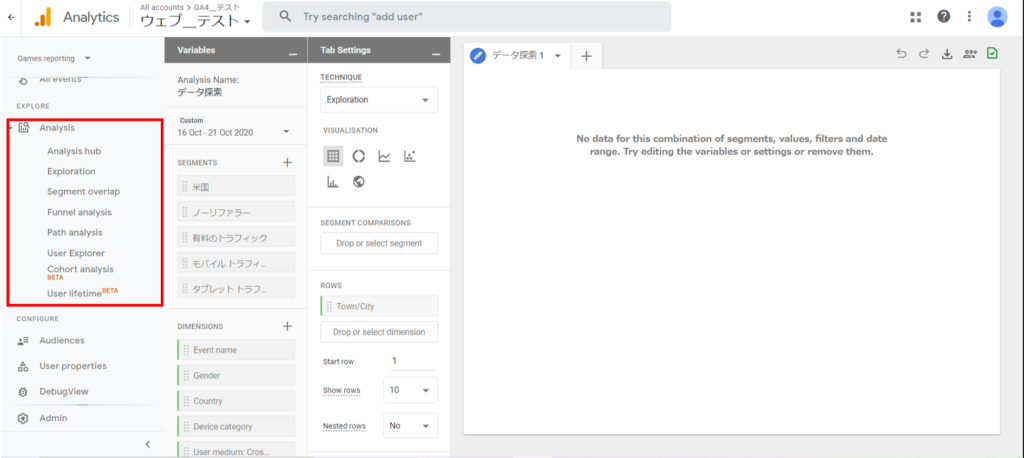

2/ BigQuery and Google Ad’s stronger connection
In GA4, BigQuery can be linked to your account for free! When you wanted to link UA propriety and BigQuery, you needed to have a 360-account meaning you needed to pay the upgrade of your analytics account. In GA4, it is free!
You will be able to export, collect and store your data in the BigQuery cloud and integrated it with other data sources, or move your GA4’s data to other sources you want to use. You will be able to automatically use the data over to BigQuery pushing even further your analysis.
GA4 and Google Ads are also better connected to automatically update audience to match you user behavior: this user bought a product? Great, Google Ad will not show him the ad to push him to convert anymore. No wasted money and no annoyed customers!
3/ To the future: machine learning and User privacy
While you could get insights using machine learning in UA, the new GA4 gave you new insights and predictions features to make your data work for you. Machine learning can now be used to predict outcomes, trend in demand of a specific products, churn rate (percentage of users that will stop using your services in a given time period), potential revenue by identifying specific segment to focus on high value customers.
In future years, marketers will also have to relate less and less on third party data (cookies from other people than the website you are using), implementing GA4 will help you follow this trend closely as Google said it will start using machine learning to fill out incomplete data resulting from this trend.
GA4 makes it also easier to protect user privacy as well as to comply with the main data control regulation (GDPR, for the European countries with strict control about collecting and storing data from European users; CCPA American regulation). GA4 give you better management tools to collect and retain your data, as well as optimizing or limit the use of it in Google Ads.
How does it work?
So technically speaking, how do you set up the GA4? Well, if you are new to Google Analytics, as GA4 is the new default property, you just have to sign up for an account and fill out the main information, and you will automatically be invited to set up the new property.
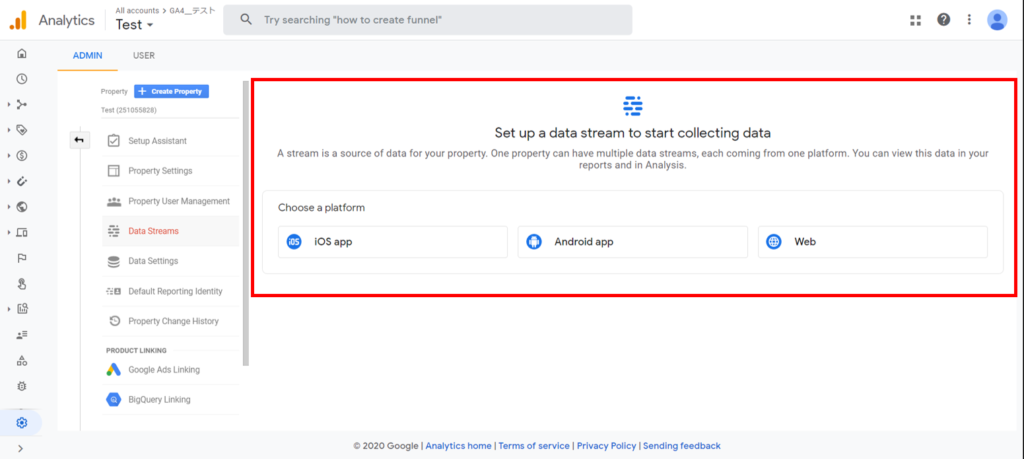

As in the app+web property beta version, when setting the new GA4, you will create data stream: web, iOS or Android. The data stream is the container that received your data. You can have up to 50 data streams for the same property, so if you have a website, and both iOS and Android apps, everything can come under the same property.
When creating the data stream, Google will guide you to tag your website or setting up the app via Firebase new project automatically connected to your account. If you are using Google Tag Manager, you will easily be able to select the two different GA4 tags: GA4 settings for the basic set up (included automatic collected events and enhancement events- pre-setup events for web data stream) and GA4 event to set up recommended and custom events and their parameters.
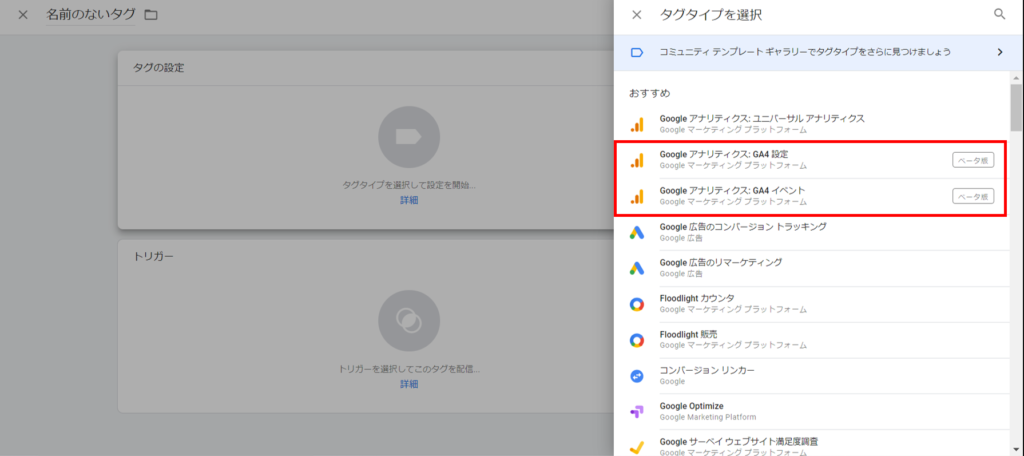

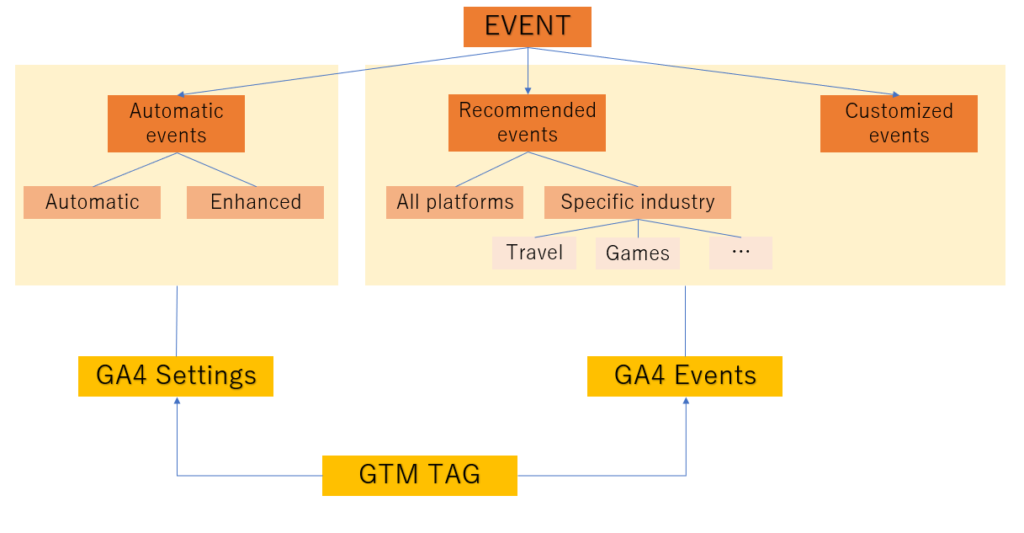

If you are already using Universal Analytics, you can choose to upgrade to a GA4 property by either create a new GA4 property or connecting to an existing one. This upgrade will not change anything in your UA property, and it will continue to collect data that you can analyze as before. After tagging your website or setting up your app for the new GA4 property, it will start collecting data and you are ready to take advantages of its new features. As it will not change anything for your UA property, it will be clever to start your GA4 property as it may become the norm in the future. This way you will also get to explore the new environment and collect data to be able to analyze future trends from your already accumulated data.

















